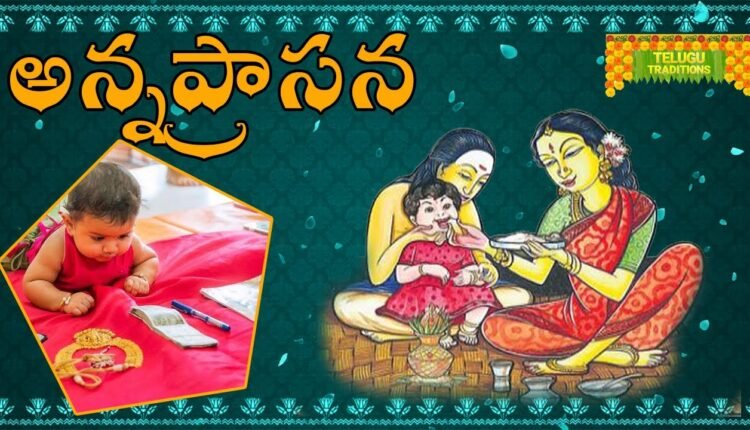Annaprasana : A Joyous Occasion In Hindu Families
Annaprasana : An Auspicious ceremony where the newly born baby is introduced to rice for the very first time, marking a significant milestone in their life. This joyous occasion holds great importance in Hindu families, akin to a grand festival. By partaking in this ritual, the baby is believed to receive blessings for a prosperous and renowned future.
The ceremony is traditionally performed during the favorable Lagnas of Virgo, Sagittarius, and Pisces.
According to Madanaratnam, Annaprashana is deemed auspicious for male children at six or eight months, while for female children, it is advised at five or seven months.
As per Narada, prayer rituals during the four months after childbirth are strictly prohibited.
Annaprasana can be conducted in the eighth, ninth, tenth, or twelfth month, with some suggesting waiting until the baby starts teething. The ideal timing aligns with Shuklapaksha, Uttarayana, and the auspicious Pushya Nakshatra, while Navami Tithi is avoided.
According to the Paraskara Grihya Sutras, the baby should be fed curd, ghee, honey, and even meat. Annaprasana is a significant event where rice is introduced to the newborn baby for the first time. To determine the auspicious time, it is advisable to consult an experienced pundit based on the baby’s horoscope. Seeking their guidance and performing the rice feeding ceremony at the designated auspicious time, as decided by the pundit, brings prosperity and success to the child.
Annaprasana Period:
The ceremony can be performed between six to twelve months of age. However, it is especially auspicious to conduct Annaprasana during Shuklapaksha when the pure radiance of Venus graces the sky. For boys, it is preferred to be done in even months, while for girls, odd months are considered favorable. The ceremony should take place on a full moon day.
Factors such as Lagna Shuddhi, Dasama Shuddhi, Vrishabha, Midhu, Kataka are taken into account. The Bhardwaja text suggests the consumption of specific meats such as bird meat for fluent speech, fish for tenderness, Krusaka bird meat or rice mixed with honey for a long life, Aati bird and Tittiri meat for vitality, rice with ghee for vigor and acuity, and curd for a strong body. The Paraskara Grihya Sutras advocate embracing all desirable qualities and consuming various substances.
Annaprasana & Belief
There is a customary belief to perform Annaprasana on the sixth day of the sixth month, although there may be varying opinions regarding the search for an auspicious Muhurtam on that particular day. It is crucial to understand that dismissing the significance of Muhurta is an incorrect notion. The choice of an auspicious time for Annaprasana greatly influences the well-being and health of the baby. Hence, it is advisable to seek a favorable Muhurta.
The procedure for Annaprasana begins with offering prayers to Lord Ganapati, followed by worshiping Lord Vishnu, Surya, Moon, Ashtadikpala Kula, and the Kula Goddess Bhudevi. It is essential to follow the rules prescribed by tradition while conducting this sacred ceremony. Annaprasana should be performed in the presence of deities, and it is recommended to commence with the Satyanarayana Swami Vrat.
Annaprasana is best conducted in the morning, specifically on Shuklapakshami days. The baby, adorned in new attire, should be seated on a mat or stool facing east, accompanied by their mother or grandmother.
Also Read : First Birthday Celebration : A Memorable Event For Everyone

